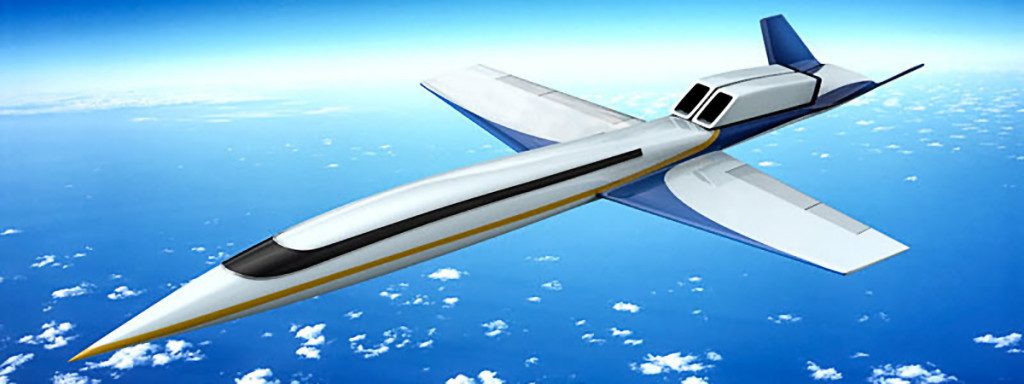Sound travels at speeds of about 343 meters per second. Imagine travelling faster than that. Some of you probably already have – in a time long gone. Supersonic flight has existed since the 1960s. Supersonic flights operate at speeds faster than 343.2 meters per second– even twice or thrice that figure. Their use in military and scientific experiment is quite common. What we’re going to bother ourselves with here, is ‘supersonic transport’ – one that serves the purpose of civilian transportation. We’ve had some supersonic aircrafts that were in commercial service, but as of today, all of them have been discontinued, primarily due to safety issues. Now many people around the world are looking forward to their return once again. When will they return?
History of Supersonic Transport
Although the idea of supersonic transport first floated in the 1950s, the first prototype was flown more than a decade later – on 31 December 1968. This civilian supersonic aircraft was developed by the Soviet Union, called the ‘Tupolev Tu-144’ – it could operate at a speed of around 2000 km/h. Soon it turned out to be the first commercial supersonic transport, starting its service on 26 December 1975 flying out from Moscow. However, the aircraft brought with itself multiple issues and due to safety concerns, Tupolev Tu-144’s service was cancelled in mid-1978.
Also Read: The Hyperloop will revolutionise transporation
There was another supersonic aircraft, and probably the most popular – called the ‘Concorde’, which first flew on early 1969. It could touch 2180km/h and can carry almost a hundred passengers. Developed and funded jointly by the French and British governments, the Concorde began operations in January 1976. On the Concord, e it was possible to travel from New York to London in just three and half hours – which is a revolutionary figure in today’s time, because that’s half the time taken by normal subsonic flights that operate right now.
This Concorde was in service for 27 years until a tragedy occurred in 2000 – a crash that ended in 113 deaths. Most blame this incident as the primary catalyst that lead to the termination of Concorde’s service in 2003, while some blame the global economic and social situations due to the 9/11 attack. Whatever the reason may be, it has been more than ten years and it is about time that the complications be resolved. Can Concorde make a comeback?

Do we really need it?
Many argue that supersonic transport is not a pressing necessity in our current world, considering all the issues it supposedly brings with itself. Yet many others are up for the supersonic travel system not just because of the ‘speed’ but the ‘time’ that they can save with this technology. And of course, because it is science and engineering feat. So why not?
So, what exactly are the complications of supersonic transport? Well, there are several challenges that add to the list. One of them is the fuel intake. So far, most civilian supersonic aircrafts depend on fossil fuels and the products from it for their power. While subsonic aircrafts typically have 30-40% of their mass as fuel (which itself is a high figure), the Concorde had more than half its mass – 55% to be precise, as just fuel for its flight.
However, organizations like NASA are working to solve this by developing more efficient fuel and supersonic vehicles that can run on renewable energy. Another challenge with supersonic transport is the ‘sonic boom’ that it creates while flying. A sonic boom is a shock wave that sounds like a thundering double bang generated when an aircraft’s velocity exceeds the speed of sound. The United States banned supersonic aircrafts flying over cities due to this issue. However, models of quieter supersonic aircrafts are under development as hinted by NASA. Let’s hope it can take the air soon enough.
Beside these big hurdles, there are plenty of other challenges – take-off noise, environmental threats, air traffic management, higher cost of operation and many more. Supersonic aircrafts are accused of causing harm to the ozone layer as they mostly operate in the stratosphere very close to the ozone layer. Scientists suggest to overcome this by operating the aircrafts at different altitude – may be even out of the atmosphere. Whatever the problem may be, it doesn’t look like these drawbacks can stop the supersonic transports from making a return.
Hope for a comeback
On June 2015, NASA announced its plan to set aside $2.3 million for eight supersonic aviation research projects. A group of notable enthusiasts, with the name ‘Club Concorde’, has also been joining hands to bring back Concorde – they claim to have raised $186 million just to bring back Concorde in service and hope to make this a reality by 2019.
Aerospace startup Boom is also working on supersonic transport. It recently announced the development of a supersonic aircraft that can fly at 2700km/h, at a mere price of $5000 for a return ticket between London and New York. The $5000 is quite economical compared to the $12000 tickets charged by Concorde during its service. Spike Aerospace based in Boston has designed a supersonic jet called the ‘Spike S512’ that could carry 12 to 18 passengers 1,700 km/h. Other companies like Hypermach Aerospace Ltd and Aerion are also developing their own supersonic transport aircrafts.
It’s not just the supersonic aircrafts, aerospace engineers are now looking at hypersonic aircrafts, which will be multiple times faster than their subsonic counterparts. But, for now let’s just wait for the return of the Concorde, or of course, an equivalent.